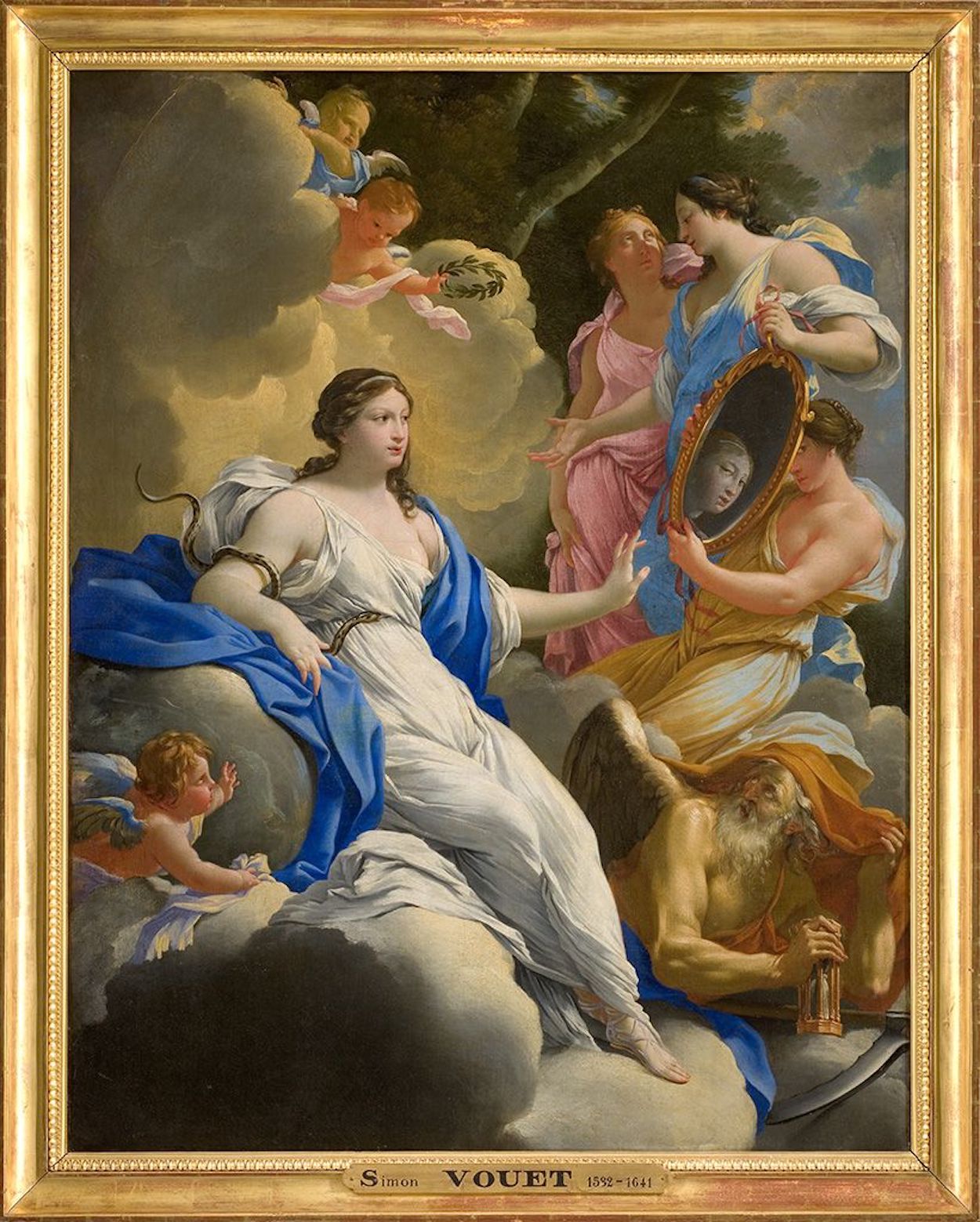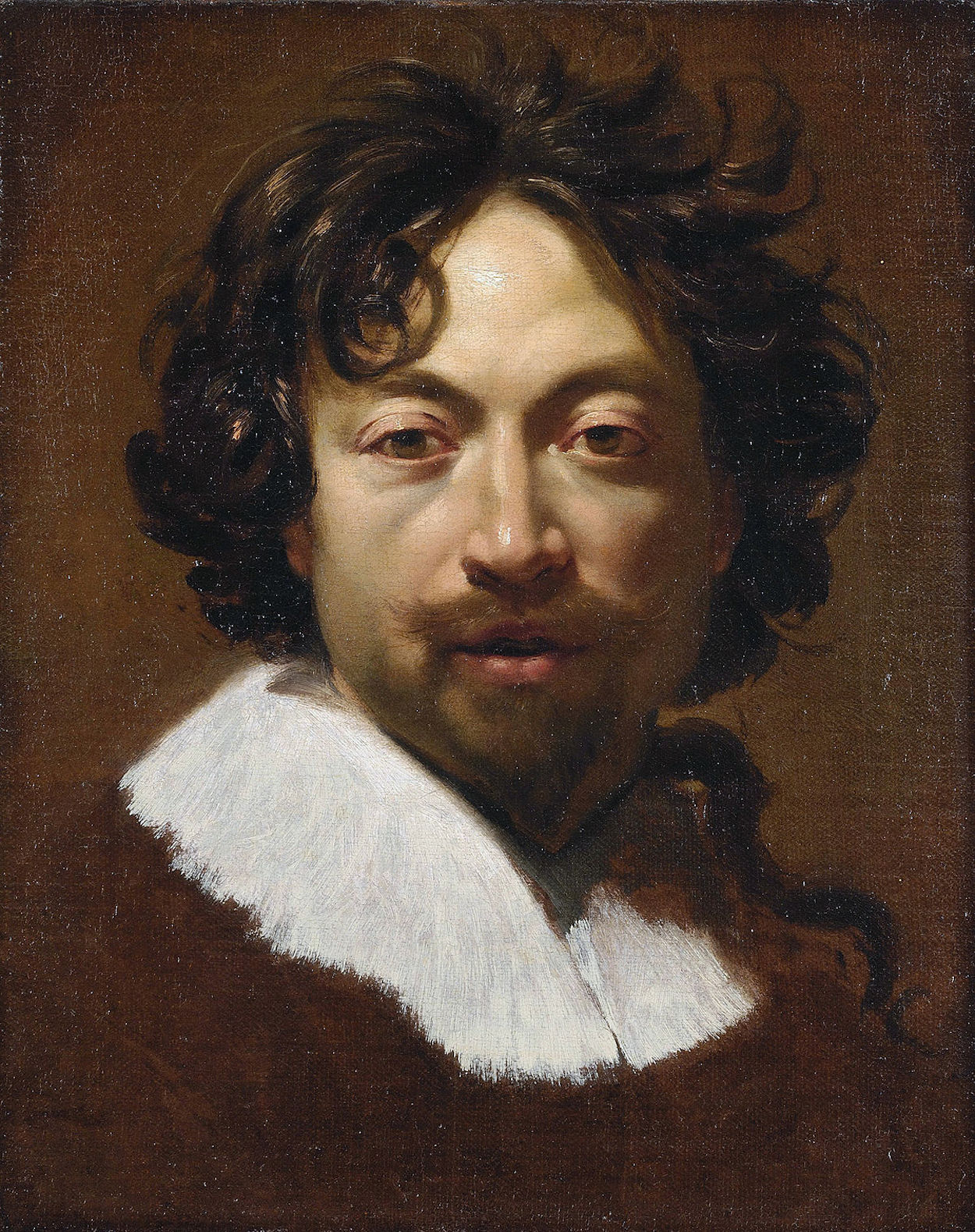Baroque art tells a lie. It soaks reality in color, saturating it with many extravagant details, while light is manipulated in an extreme contrast that shines upon the most dramatic aspect.
Abundance of detail might seem noisy enough to cause an overwhelmed eye to withdraw. To make sense of extravagant ornaments, it helps to focus on a key feature, one we are naturally inclined to observe, and then navigate our way through different elements into meaning—within this bright, radiant atmosphere, a gloomy mirror stares at us, haunting the scene: to understand the mirror’s power is to understand the title of the painting.
Prudence is wiser than caution, it paints an accurate portrait of the world, using both bright and dark tones but preferring to see neither. Everyone confuses their own representation of the world for the world itself, so the limit of one’s vision is its boundaries for reality. To choose to paint with one tone over the other is to shrink it, to live in a smaller world.
The secret, people say, is to keep positive, to look upon the clouds where the sun sprouts, to bury deep every shadowy spike of negativity, to focus on that demi-deity we aspire to become by suppressing all the flaws that get in its way—then the angels will come crowning us with bliss.
The secret tells a lie! Nothing is more dangerous than the effortless consolation of “everything is going to be alright,” that time will heal, or that luck will turn in our favor. This compulsion of expelling whatever doesn’t fit the positive path to self-exaltation leads to the creation of a shallow, artificial entity, ironically sustained with negativity (being the basis of it “what I don’t want to be”). It is thus unsustainable, unpredictable, and not structured on true foundations. How can one be above this protective self-deception? It is a crude reflection.
Even within this painting we are forced to face negativity, it’s literally the only thing looking us in the eyes, and without it we would get lost in meaningless ornaments. This crude reflection mirrors the internal conscience of pessimism, the certainty of adversity and wickedness, both internal and external. It’s from the power of pessimism that one gathers strength to foresee the most negative outcomes, and acts with caution by accepting nature both as beautiful and brutal. This is the awareness that makes risk and kindness truly beautiful.
To be prudent internally is to be wholesome, to tame rather than neglect. Embrace the flaws, study my reflection glitter-free, learn what to expect from myself under what circumstances, to deal with a real me rather than a desired me. Keeping the serpent under the right arm as a counselor, like in the painting, and make decisions based on the consequences it might bring to myself and others. The optimistic opposite makes us more vulnerable to ourselves.
External prudence is the internal compass towards earth as an unforgiving place. Humans are part of a food chain. We eat, sometimes we might be eaten. We destroy nature, sometimes calamities happen and destroy us. Torments and misery are the constant against which human effort thrive, why laws are born and institutions rise. Few are left out in this process against injustice, order is just the name one generation gives to organization. Once there were slaves, today we have workers, tomorrow is unknown…
Prudence is to be regarded as part of nature’s ruthless engine, accepting that suffering will be present but not presented as some sort of personal punishment. Time is peeking with new challenges and it’s up to us to be prepared.
Baroque art tells a lie. It doesn’t present the world as it is, but unlike mindless optimism, it deepens reality, often through suffering, to emerge with a clearer truth.
- Artur Deus Dionisio


 Simon Vouet
Simon Vouet